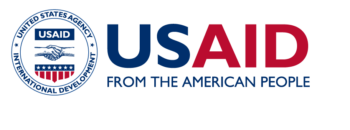Santé maternelle et néonatale lors d'épidémies de maladies infectieuses : orientations opérationnelles pour les situations humanitaires et fragiles
This guidance provides humanitarian actors responsible for maternal and newborn health (MNH) programming with priority readiness and response actions to maintain the continuity, quality, and safety of health care for pregnant and postnatal women and adolescent girls and their newborns during an infectious disease outbreak response in a humanitarian or fragile setting.
It is designed to be an operational guide to support health actors to maintain critical services during infectious disease outbreaks and ensure necessary SRH considerations are integrated within the outbreak response; it is not a clinical guide.
This guidance was developed by the READY initiative with support from Dr. Benjamin Black, Seema Manohar, Dr. Alejandra Alonso Caprile, and the Technical Advisory Group: Elaine Scudder (International Rescue Committee), Hannah Tappis (Jhpiego), Neal Russell (Médecins Sans Frontières), Désirée Lichtenstein and Catrin Schulte-Hillen (United Nations Population Fund), Fatima Gohar (UNICEF), and Tejshiri Harivallabh Shah (World Health Organization). The guidance was reviewed by members of the Inter-Agency Working Group on Reproductive Health in Crises Maternal and Newborn Health Sub-Working Group and the Every Newborn Action Plan in Emergencies Working Group.
The guidance is divided into four sections. Section one explores the effects of infectious disease outbreaks on MNH. Section two examines ways to maintain the safety and continuity of essential MNH services before and during infectious disease outbreaks. Section three explores ways to strengthen community-based MNH services. Section four covers cross-cutting considerations for MNH, such as Risk Communication and Community Engagement (RCCE) and Infection Prevention and Control (IPC) within outbreak preparedness and responses. Finally, the guidance includes two annexes: A preparedness and response checklist to aid programming, and recommendations for changes to breastfeeding in different infectious contexts.
Downloads (more languages coming soon):


Ce site Web est rendu possible grâce au soutien du peuple américain à travers le Agence des États-Unis pour le développement international (USAID) dans le cadre de l’initiative READY. READY (pas un acronyme) est soutenu par l'USAID Bureau pour la démocratie, les conflits et l'assistance humanitaire, Bureau américain d'assistance en cas de catastrophe à l'étranger (OFDA) et est dirigé par Sauver les enfants en partenariat avec le Centre Johns Hopkins pour la santé humanitaire, le Centre Johns Hopkins pour les programmes de communication, Royaume-Uni-Med, Alliance ÉcoSanté, et Miséricorde Malaisie. Le contenu de ce site Web relève de la seule responsabilité de Save the Children. Les informations fournies sur ce site Web ne reflètent pas nécessairement les points de vue de l'USAID, de l'un ou de tous les partenaires du consortium, ou du gouvernement des États-Unis, et ne constituent pas des informations officielles du gouvernement américain.


